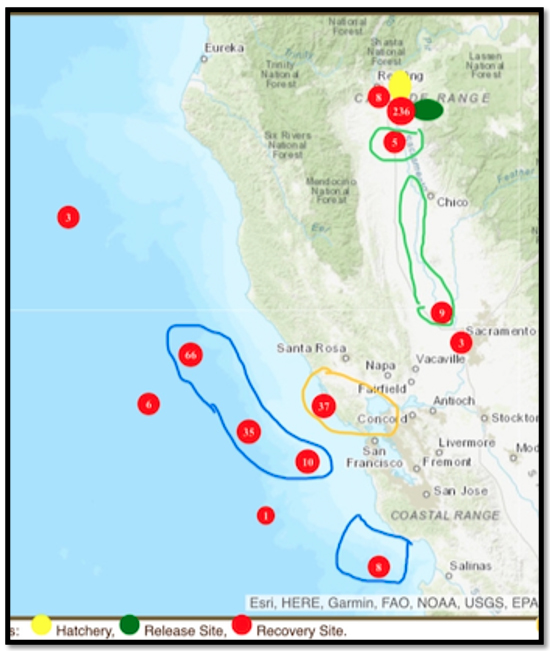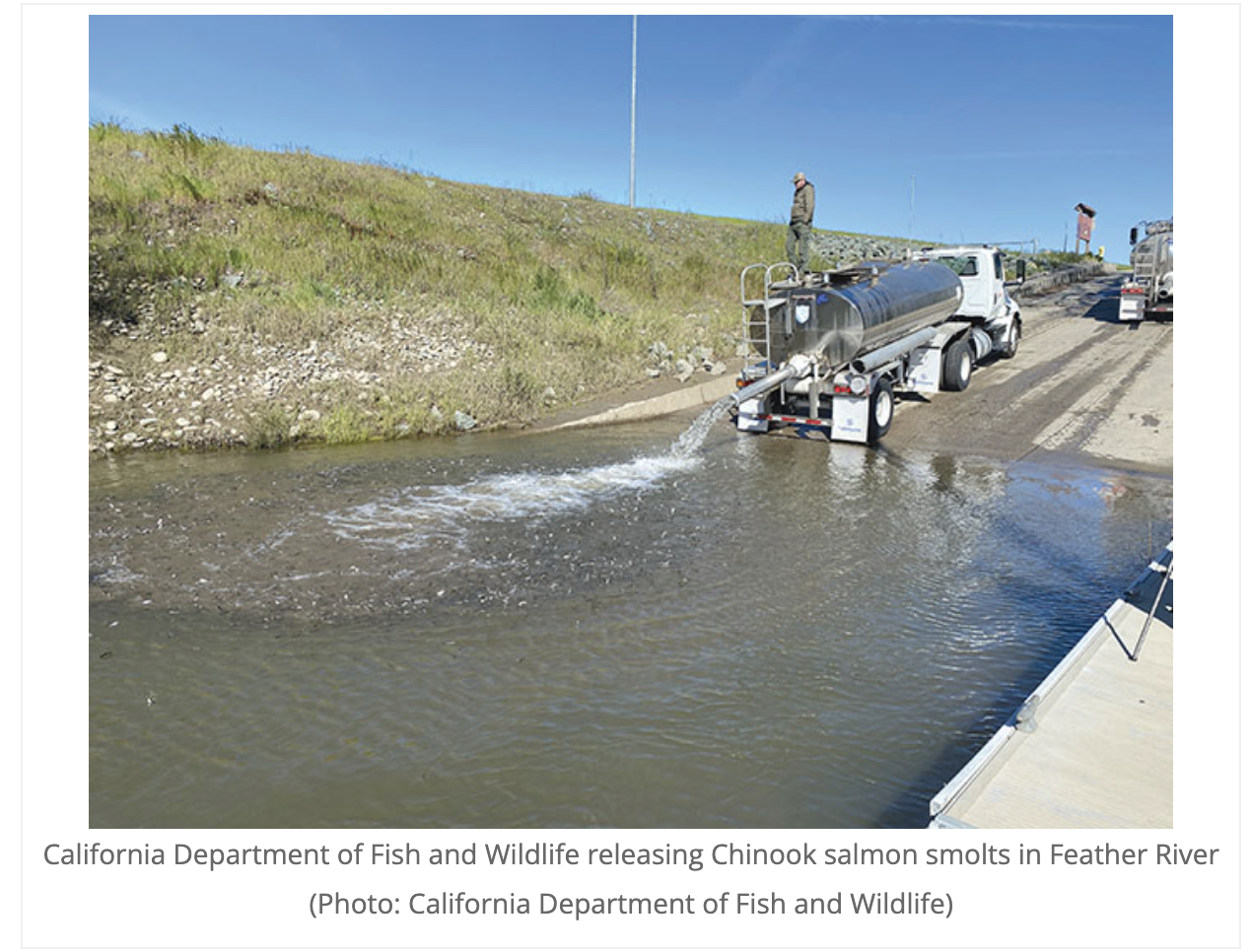California Salmon Fishery and the 2025 Season Prognosis
*Note: NCGASA is providing a place for more information on salmon, but all of Cannon’s recommendations do not necessarily represent the views of our organization.
By Tom Cannon thomascannon0@gmail.com
Download the full report, CLICK HERE
There is a case building for a 2025 salmon fishing season because of what is anticipated as a strong showing of Central Valley hatchery smolt releases in wet years 2023 and 2024. With 30 million salmon smolts released per year with increasing numbers trucked to Bay and coastal acclimation net pens, the expected 2025 fishable stock of age 2-4 salmon in coastal waters from Pt Arena south to Pt Sur including Monterey Bay is on the order of 300,000 salmon (about double the government estimate).
However, concern remains for wild/natural born stocks of endangered Central Valley winter and spring run salmon, recovering Klamath salmon, and the collapsing upper Sacramento in-river fall-run stock that would be caught up in a 2025 fishery. Brood years 2021-2023 of these salmon populations, the offspring of stressed parents in drought years 2021 and 2022 faced poor hatching and early rearing conditions in drought-stricken rivers. A 2025 fishery would increase stress on their populations as they likely have similar migration and residence patterns in the ocean as their hatchery counterparts. However, options to minimize the risks do exist.
The California salmon fishery has three major components – north coast, central coast, and inland Central Valley – divided on the coast by Pt Arena (Figure 1). The Central Valley fall run salmon coastal fishery is concentrated from Pt Arena south to Pt Sur from May-September (Figures 1-3). The Klamath River salmon do appear in numbers south of Pt Arena but mainly in June-July, with few in the Aug-Sep fishery[1]. Winter and spring run salmon are primarily present in the area at age-2 as most of the adults are in spawning rivers, and these age-2 salmon can be avoided by setting harvest size regulations. Most Coleman Hatchery adults are caught in the coastal fishery from May-July, with most in the Sacramento River by September-October. Assuming the natural upper river stock has a similar pattern, limiting the coastal fishery to August-October and allowing no fishery in the Bay, Delta, and mainstem Sacramento River should minimize harvest of the upper river stock.
Tom Cannon is an estuarine fisheries ecologist and biostatistician and has been involved in Delta fishery issues for more than 35 years. Over that period, Tom has worked for or been a consultant to the California Department of Fish and Wildlife, U.S. Bureau of Reclamation, National Marine Fisheries Service, State Water Contractors, CalFed Bay-Delta Program, State Water Resources Control Board, PG&E, California Striped Bass Association, Fisheries Foundation and CSPA. He has been involved in numerous habitat restoration projects. Find his reports on https://calsport.org/fisheriesblog/








